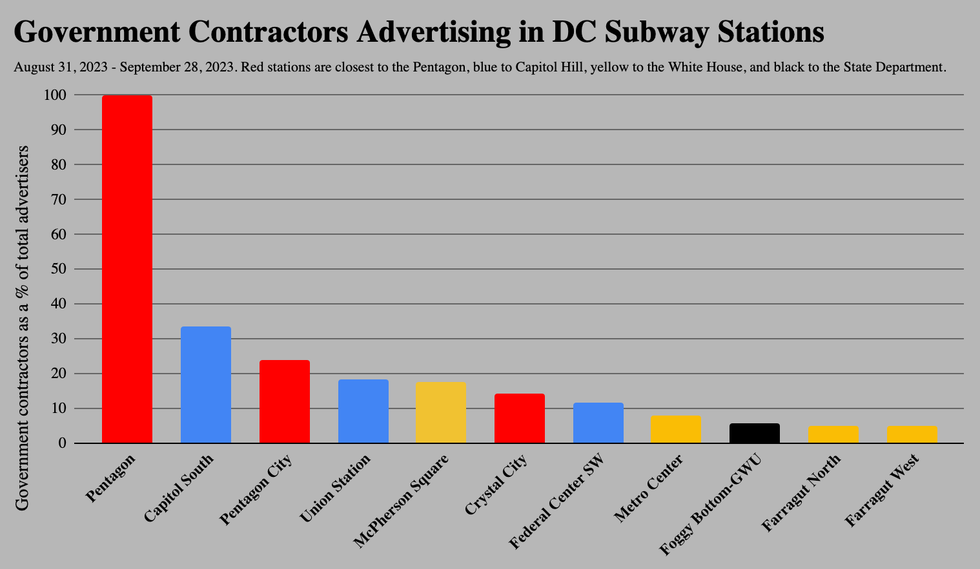There are many drivers of this push for a larger, more dangerous arsenal—from the misguided notion that more nuclear weapons will make us safer to an entrenched network of companies, governmental institutions, members of Congress, and policy pundits who will profit (directly or indirectly) from an accelerated nuclear arms race. One indicator of the current state of affairs is the resurgence of former Arizona Sen. Jon Kyl, who spent 18 years in Congress opposing even the most modest efforts to control nuclear weapons before he went on to work as a lobbyist and policy advocate for the nuclear weapons complex.
His continuing prominence in debates over nuclear policy—evidenced most recently by his position as vice chair of a congressionally appointed commission that sought to legitimize an across-the-board nuclear buildup—is a testament to our historical amnesia about the risks posed by nuclear weapons.
Senator Strangelove
Republican Jon Kyl was elected to the Senate from Arizona in 1995 and served in that body until 2013, plus a brief stint in late 2018 to fill out the term of the late Sen. John McCain.
One of Kyl’s signature accomplishments in his early years in office was his role in lobbying fellow Republican senators to vote against ratifying the Comprehensive Test Ban Treaty (CTBT), which went down to a 51 to 48 Senate defeat in October 1999. That treaty banned explosive nuclear testing and included monitoring and verification procedures meant to ensure that its members met their obligations. Had it been widely adopted, it might have slowed the spread of nuclear weapons, now possessed by nine countries, and prevented a return to the days when aboveground testing spread cancer-causing radiation to downwind communities.
The defeat of the CTBT marked the beginning of a decades-long process of dismantling the global nuclear arms control system, launched by the December 2001 withdrawal of President George W. Bush’s administration from the Nixon-era Anti-Ballistic Missile (ABM) treaty. That treaty was designed to prevent a “defense-offense” nuclear arms race in which one side’s pursuit of anti-missile defenses sparks the other side to build more—and ever more capable—nuclear-armed missiles. James Acton of the Carnegie Endowment for International Peace called the withdrawal from the ABM Treaty an “epic mistake” that fueled a new nuclear arms race. Kyl argued otherwise, claiming the withdrawal removed “a straitjacket from our national security.”
The truly naive ones are the nuclear hawks who insist on clinging to the dubious notion that vast (and still spreading) stores of nuclear weaponry can be kept around indefinitely without ever being used again, by accident or design.
The end of the ABM treaty created the worst of both worlds—an incentive for adversaries to build up their nuclear arsenals coupled with an abject failure to develop weaponry that could actually defend the United States in the event of a real-world nuclear attack.
Then, in August 2019, during the first Trump administration, the U.S. withdrew from the Intermediate Nuclear Forces (INF) treaty, which prohibited the deployment of medium-range missiles with ranges of 500 to 5,500 kilometers. That treaty had been particularly important because it eliminated the danger of having missiles in Europe that could reach their targets in a very brief time frame, a situation that could shorten the trigger on a possible nuclear confrontation.
Then-Sen. Kyl also used the eventual pullout from the INF treaty as a reason to exit yet another nuclear agreement, the New START treaty, co-signing a letter with 24 of his colleagues urging the Trump administration to reject New START. He was basically suggesting that lifting one set of safeguards against a possible nuclear confrontation was somehow a reason to junk a separate treaty that had ensured some stability in the U.S.-Russian strategic nuclear balance.
Finally, in November 2023, NATO suspended its observance of a treaty that had limited the number of troops the Western alliance and Russia could deploy in Europe after the government of Vladimir Putin withdrew from the treaty earlier that year in the midst of his ongoing invasion of Ukraine.
The last U.S.-Russian arms control agreement, New START, caps the strategic nuclear warheads of the two countries at 1,550 each and has monitoring mechanisms to make sure each side is holding up its obligations. That treaty is currently hanging by a thread. It expires in 2026, and there is no indication that Russia is inclined to negotiate an extension in the context of its current state of relations with Washington.
As early as December 2020, Kyl was angling to get the government to abandon any plans to extend New START, coauthoring an op-ed on the subject for the Fox News website. He naturally ignored the benefits of an agreement aimed at reducing the chance of an accidental nuclear conflict, even as he made misleading statements about it being unbalanced in favor of Russia.
Back in 2010, when New START was first under consideration in the Senate, Kyl played a key role in extracting a pledge from the Obama administration to throw an extra $80 billion at the nuclear warhead complex in exchange for Republican support of the treaty. Even after that concession was made, Kyl continued to work tirelessly to build opposition to the treaty. If, in the end, he failed to block its Senate ratification, he did help steer billions in additional funding to the nuclear weapons complex.
Our Man from Northrop Grumman
In 2017, between stints in the Senate, Kyl worked as a lobbyist with the law firm Covington and Burling, where one of his clients was Northrop Grumman, the largest beneficiary of the Pentagon’s nuclear weapons spending binge. That company is the lead contractor on both the future B-21 nuclear bomber and Sentinel intercontinental ballistic missile (ICBM). The Sentinel program drew widespread attention recently when it was revealed that, in just a few years, its estimated cost had jumped by an astonishing 81%, pushing the price for building those future missiles to more than $140 billion (with tens of billions more needed to operate them in their years of “service” to come).
That stunning cost spike for the Sentinel triggered a Pentagon review that could have led to a cancellation or major restructuring of the program. Instead, the Pentagon opted to stay the course despite the enormous price tag, asserting that the missile is “essential to U.S. national security and is the best option to meet the needs of our warfighters.”
Independent experts disagree. Former Secretary of Defense William Perry, for instance, has pointed out that such ICBMs are “some of the most dangerous weapons we have” because a president, warned of a possible nuclear attack by an enemy power, would have only minutes to decide whether to launch them, greatly increasing the risk of an accidental nuclear war triggered by a false alarm. Perry is hardly alone. In July 2024, 716 scientists, including 10 Nobel laureates and 23 members of the National Academies, called for the Sentinel to be canceled, describing the system as “expensive, dangerous, and unnecessary.”
Meanwhile, as vice chair of a congressionally mandated commission on the future of U.S. nuclear weapons policy, Kyl has been pushing a worst-case scenario regarding the current nuclear balance that could set the stage for producing even larger numbers of (Northrop Grumman-built) nuclear bombers, putting multiple warheads on (Northrop Grumman-built) Sentinel missiles, expanding the size of the nuclear warhead complex, and emplacing yet more tactical nuclear weapons in Europe. His is a call, in other words, to return to the days of the Cold War nuclear arms race at a moment when the lack of regular communication between Washington and Moscow can only increase the risk of a nuclear confrontation.
Kyl does seem to truly believe that building yet more nuclear weapons will indeed bolster this country’s security, and he’s hardly alone when it comes to Congress or, for that matter, the next Trump administration. Consider that a clear sign that reining in the nuclear arms race will involve not only making the construction of nuclear weapons far less lucrative, but also confronting the distinctly outmoded and unbearably dangerous arguments about their alleged strategic value.
The Advocate
In October 2023, when the Senate Armed Services Committee held a hearing on a report from the Congressional Strategic Posture Commission, it had an opportunity for a serious discussion of nuclear strategy and spending, and how best to prevent a nuclear war. Given the stakes for all of us should a nuclear war between the United States and Russia break out—up to an estimated 90 million of us dead within the first few days of such a conflict and up to five billion lives lost once radiation sickness and reduced food production from the resulting planetary “nuclear winter” kick in—you might have hoped for a wide-ranging debate on the implications of the commission’s proposals.
Unfortunately, much of the discussion during the hearing involved senators touting weapons systems or facilities producing them located in their states, with little or no analysis of what would best protect Americans and our allies. For example, Sen. Mark Kelly (D-Ariz.) stressed the importance of Raytheon’s SM-6 missile—produced in Arizona, of course—and commended the commission for proposing to spend more on that program. Sen. Jackie Rosen (R-Nev.) praised the role of the Nevada National Security Site, formerly known as the Nevada Test Site, for making sure such warheads were reliable and would explode as intended in a nuclear conflict. You undoubtedly won’t be shocked to learn that she then called for more funding to address what she described as “significant delays” in upgrading that Nevada facility. Sen. Tommy Tuberville (R-Ala.) proudly pointed to the billions in military work being done in his state: “In Alabama we build submarines, ships, airplanes, missiles. You name it, we build it.” Sen. Eric Schmitt (R-Mo.) requested that witnesses confirm how absolutely essential the Kansas City Plant, which makes non-nuclear parts for nuclear weapons, remains for American security.
The next few years will be crucial in determining whether ever growing numbers of nuclear weapons remain entrenched in this country’s budgets and its global strategy for decades to come or whether common sense can carry the day and spark the reduction and eventual elimination of such instruments of mass devastation.
And so it went until Sen. Elizabeth Warren (D-Mass.) asked what the nuclear buildup recommended by the commission would cost. She suggested that, if past history is any guide, much of the funding proposed by the commission would be wasted: “I’m willing to spend what it takes to keep America safe, but I’m certainly not comfortable with a blank check for programs that already have a history of gross mismanagement.”
The answer from Kyl and his co-chair Marilyn Creedon was that the commission had not even bothered to estimate the costs of any of what it was suggesting and that its recommendations should be considered regardless of the price. This, of course, was good news for nuclear weapons contractors like Northrop Grumman, but bad news for taxpayers.
The Brink of Armageddon?
Nuclear hardliners frequently suggest that anyone advocating the reduction or elimination of nuclear arsenals is outrageously naive and thoroughly out of touch with the realities of great power politics. As it happens though, the truly naive ones are the nuclear hawks who insist on clinging to the dubious notion that vast (and still spreading) stores of nuclear weaponry can be kept around indefinitely without ever being used again, by accident or design.
There is another way. Even as Washington, Moscow, and Beijing continue the production of a new generation of nuclear weapons—such weaponry is also possessed by France, India, Israel, North Korea, Pakistan, and the United Kingdom—a growing number of nations have gone on record against any further nuclear arms race and in favor of eliminating such weapons altogether. In fact, the Treaty for the Prohibition of Nuclear Weapons has now been ratified by 73 countries.
As Beatrice Fihn, former director of the Nobel-prize-winning International Campaign to Abolish Nuclear Weapons, or ICAN, pointed out in a recent essay in The New York Times, there are numerous examples of how collective action has transformed “seemingly impossible situations.” She cited the impact of the antinuclear movement of the 1980s in reversing a superpower nuclear arms race and setting the stage for sharp reductions in the numbers of such weapons, as well as a successful international effort to bring the nuclear ban treaty into existence. She noted that a crucial first step in bringing the potentially catastrophic nuclear arms race under control would involve changing the way we talk about such weapons, especially debunking the myth that they are somehow “magical tools” that make us all more secure. She also emphasized the importance of driving home that this planet’s growing nuclear arsenals are evidence that all too many of those in power are acquiescing in a reckless strategy “based on threatening to commit global collective suicide.”
The next few years will be crucial in determining whether ever growing numbers of nuclear weapons remain entrenched in this country’s budgets and its global strategy for decades to come or whether common sense can carry the day and spark the reduction and eventual elimination of such instruments of mass devastation. A vigorous public debate on the risks of an accelerated nuclear arms race would be a necessary first step toward pulling the world back from the brink of Armageddon.







